We will learn and discuss Differences Between Second Generation and Third Generation Computer systems in this article.
In today’s generation, computers and electronic devices are used and utilized in every walk of life.
The history of computers is hundreds of years ago before calculations were performed using an abacus.
The development of the computer has made a remarkable change in the overall computer and IT industry.
This development of computers can be classified into generations of computers according to their features, characteristics, advantages, disadvantages, and the hardware they are equipped with.
The computer can easily handle complex calculations and obtain the output within a few clicks.
- First Generation Computer (1946-1956).
- Second Generation Computer (1956-1964).
- Third Generation Computer (1964-1971).
- Fourth Generation Computer (1971-1985).
- Fifth Generation Computer (1985-Present).
What is the Second Generation of Computer Systems?
The computer generations can be classified according to their timeline and hardware and software functionality development.
Till now, five generations of computers are categorized according to their size and processing power.
The timeline of the second-generation falls between [1956 - 1963].
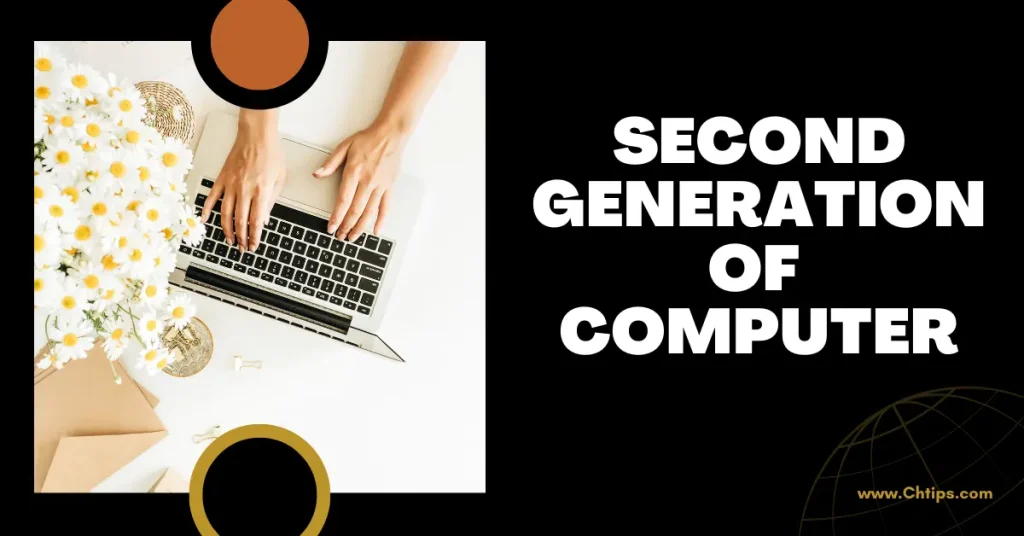
They used and utilized transistors in their hardware instead of enormous vacuum tubes, which was used in the first generation of computer.
The vacuum tubes increased in size and generated a tremendous amount of heat and energy compared to the second generation of computers.
Transistors eventually decreased the size of computers, making them highly portable, installed in small spaces, and easily transferred from one location to another.
The transistor was designed and developed by Walter Brattain, John Bardeen, and William Shockley on December 23, 1947.
The development of the transistor revolutionized the field of computers.
These transistors were tiny in size, reliable, and used extensively. The speed of computers increased dramatically when used transistors.
These 2nd generations of computers used high-level languages like COBOL and FORTRAN and also were capable of accessing batch programming and multi-programming operating system.
The second generation of computers was used as a part of the industry of nuclear energy, and their examples are
- IBM 7030/7094
- Honeywell 400 Philco
What is the Third Generation of Computer Systems
The timeline of the 3rd generation of computers is between 1964 to 1971.
In this generation of computers, Integrated circuits [ICs] were used instead of transistors, eventually increasing the overall functionality and performance of the computer system.
The development of the 3rd generation of computers was far more advanced compared to the second generation of the computer system.
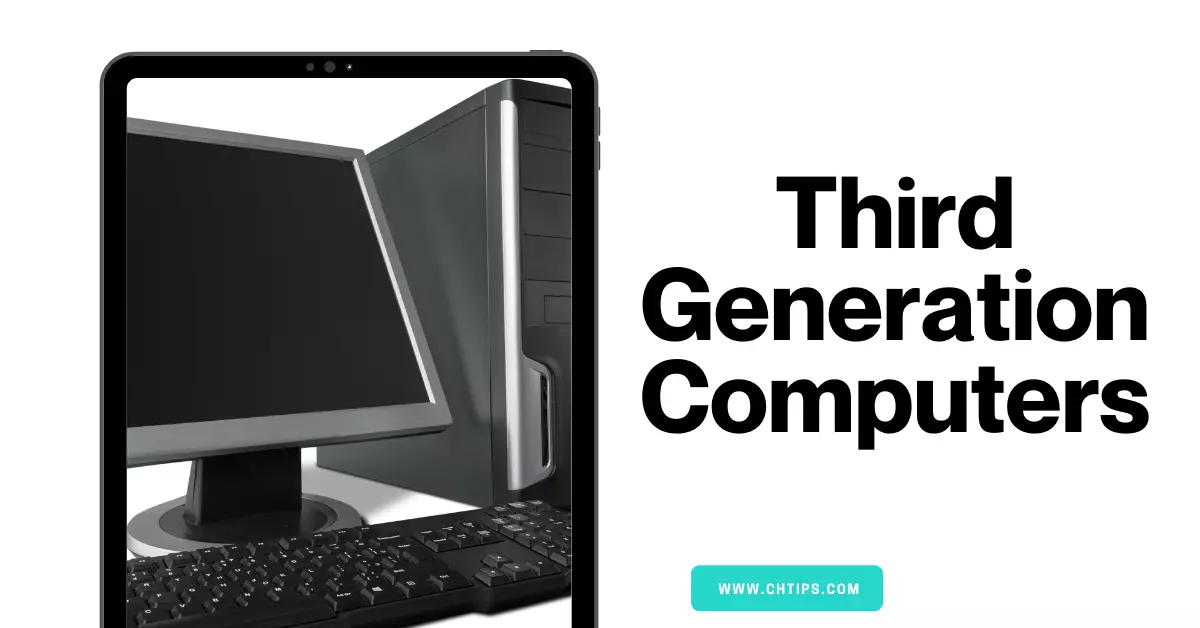
The Integrated Circuit was invented by Jack Kilby, an electrical engineer from Texas Instrument Company, on September 12, 1958.
The invention of IC was a stepping stone toward the further development of the computer system.
The ICs made computer systems more compact in shape and size; also, they were comparatively faster than the second generation of computers.
Due to enhanced speed and design, they became more popular, which increased their efficiency and reliability.
3rd generation computers were easy to maintain and produced less heat and energy.
This generation of computers extensively used operating systems also utilized high-level programming languages like COBOL and FORTRAN.
The ICs are extensively used and utilized in all modern electronic devices due to their higher efficiency rate with more advanced and powerful performance.
These ICs have overall enhanced the performance of electronic devices and computer systems.
Integrated circuits [IC] can be programmed in a unique way to derive necessary results.
Differences Between Second Generation and Third Generation Computer With Image
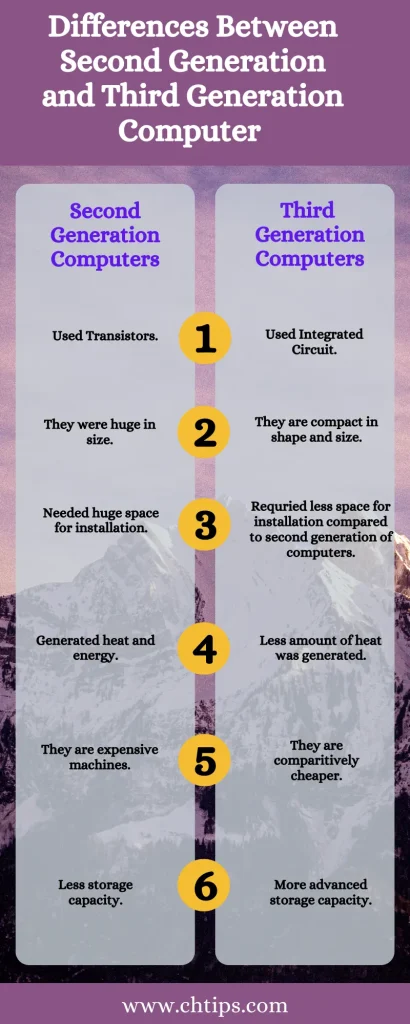
Differences Between Second Generation and Third Generation Computer
| # | 2nd Generation Computers | 3rd Generation Computers |
| 1 | 1956 – 1963 [Timeline]. | 1964 to 1971 [Timeline]. |
| 2 | Used Transistors. | Used Integrated Circuit. |
| 3 | The transistor was designed and developed by Walter Brattain, John Bardeen, and William Shockley. | The Integrated Circuit was invented by Jack Kilby. |
| 4 | They were huge in size. | They are compact in shape and size. |
| 5 | Needed huge space for installation. | Required less space for installation compared to the second generation of computers. |
| 6 | Generated heat and energy. | Less amount of heat was generated. |
| 7 | They are expensive machines. | They are comparatively cheaper. |
| 8 | Used punch cards for input and outputs. | Keyboards and monitors were used for input and output. |
| 9 | Less storage capacity. | More advanced storage capacity. |
| 10 | Slower Computers. | Faster operating computers than second-generation of computers. |
| 11 | Fortran and Cobol languages are used. | Multitasking and multiprogramming machines |
Features and Characteristics of Second Generation of Computer
- The second generation of computers used and utilized transistors instead of substantial vacuum tubes in their circuitry.
- They are equipped to handle high-level programming languages like COBOL and FORTRAN.
- They use assembly language.
- They are more reliable and user-friendly than the first generation of computers.
- They consume less heat and energy.
- They are faster machines compared to 1st generation of computers.
- Magnetic tapes and disks were used as secondary storage devices. They Use punch cards for inputs and printouts for outputs.
- They are equipped with faster processing and handling time.
- They can connect with other computers and devices.
- They are portable
- They consume less amount of energy.
- They are more compact and can be fitted or installed in small spaces.
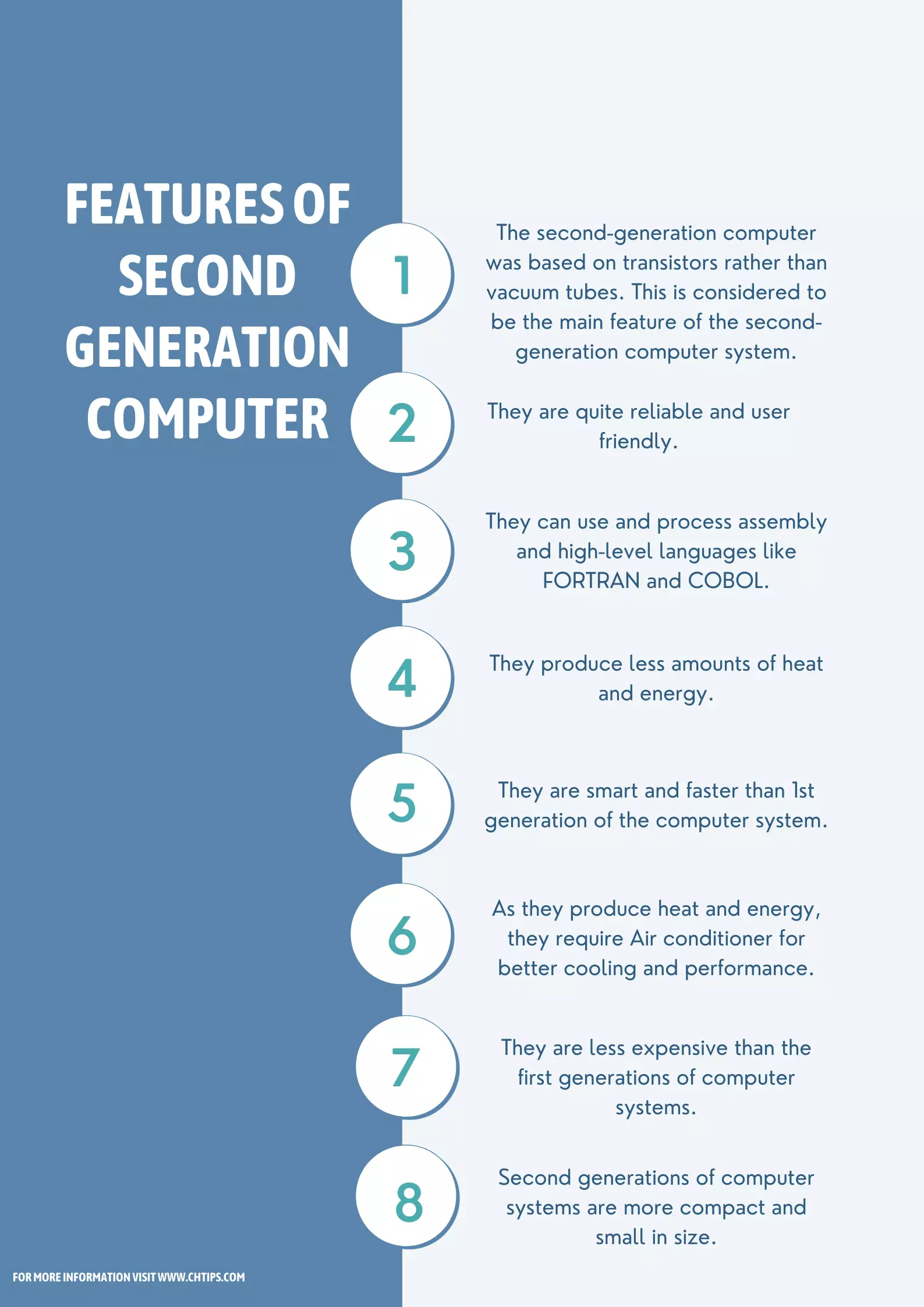
Features and Characteristics of Third Generations of Computer
- The third generation of computers used and utilized ICs [Integrated Circuit] in their circuitry for better and enhanced performance.
- They are more reliable compared to second-generation computer systems.
- They are compact and hence can be installed in small spaces.
- VLSI {Very Large Scale Integration} and ULSI {Ultra Large Scale Integration} chips were used to develop compact designs.
- They can perform multiprogramming and multitasking.
- High-Level Programming languages were used like FORTRAN and COBOL.
- They produce less heat and energy compared to other generations of computers.
- They are portable devices and can be shifted from one place to another.
- 3rd generations of computers are manufactured to achieve desired results.
- They are much faster than the second generation of computers.
- They used keyboards and monitors as input and output devices.
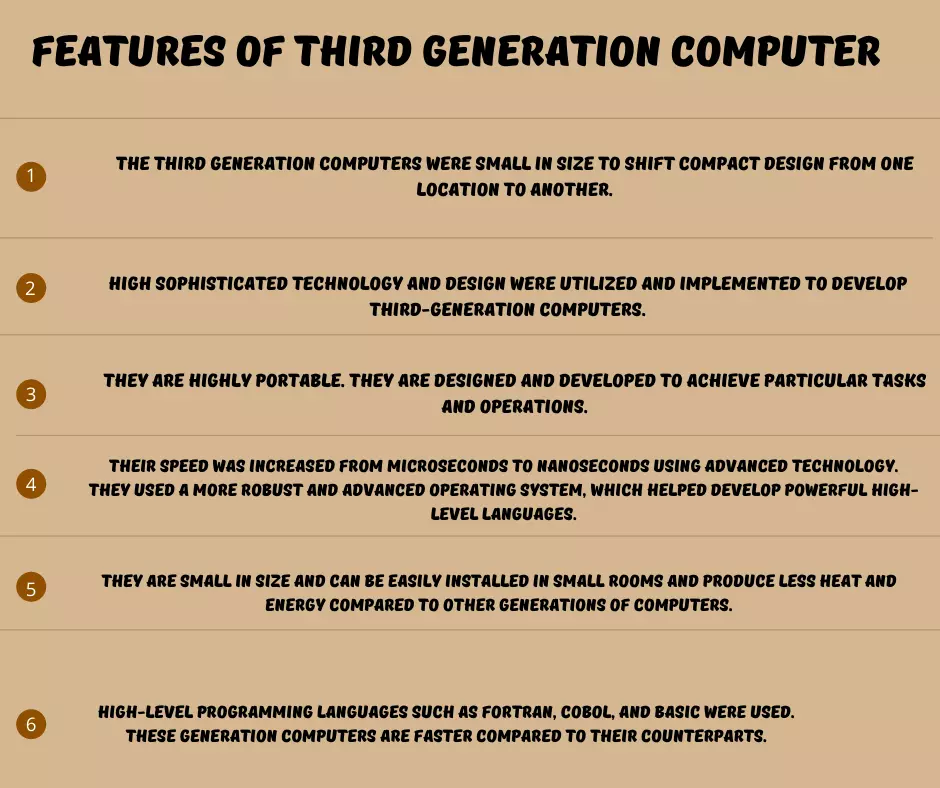
Advantages and Disadvantages of Second Generation of Computer
| Advantages | Disadvantages |
| They used transistors that are more advanced than huge vacuum tubes. | Second Generations of computers are expensive and require maintenance. |
| They require less energy compared to the first generation of computers. | They produce heat; therefore air conditioner is required. |
| They generate less heat. | They are comparatively slower than the 2nd and 3rd generations of computers. |
| The Second-generation computer uses magnetic tapes and magnetic drums for data and information storage. | They are not capable of performing multitasking with rapid speed. |
| They are faster and more reliable computers compared to previous computer generations. | Due to heat, the hardware device is likely to get damaged. |
| They are capable of handling more complex tasks and operations. | Input and output devices like punch cards were very slow to operate. |
| They use high-level programming languages. | They are designed and developed for specific tasks and operations. |
| The use of operating systems can be seen in these devices. | They used magnetic drums and magnetic tapes, which restricted the storage space. |
Advantages and Disadvantages of Third Generation of Computer
| Advantages | Disadvantages |
| The third generation of computer systems used and utilized Integrated circuits instead of huge vacuum tubes and transistors. | The design and architecture are very complex. |
| The transistors made these computers compact in shape and size. | They are costly. |
| Due to their compact design, they were highly portable and could be shifted from one location to another. | They are not considered home or personal computers. |
| They are less expensive compared to the 1st and 2nd generation of computers. | The Integrated Circuit is a sophisticated technology. |
| They consumed less electricity. | Skilled professionals are required for maintenance |
| They generated less heat and energy. | The components and devices are expensive. |
| They are multitasking and multiprogramming machines. | The devices used in a third-generation computer cannot be repaired quickly. |
| They are reliable and efficient. | They are designed and developed for specific tasks and operations. |
Second Generation and Third Generation Computer Difference PDF Download
Examples of Second (2nd) Generation of Computer
- IBM
- UNIVAC 1108
- Honeywell 400
- CDC 1604
- CDC 3600
- PDP1
- PDP3
- PDP5
- PDP8
- ALTAS
- LEO
- PDP (Programmed Data Processor).
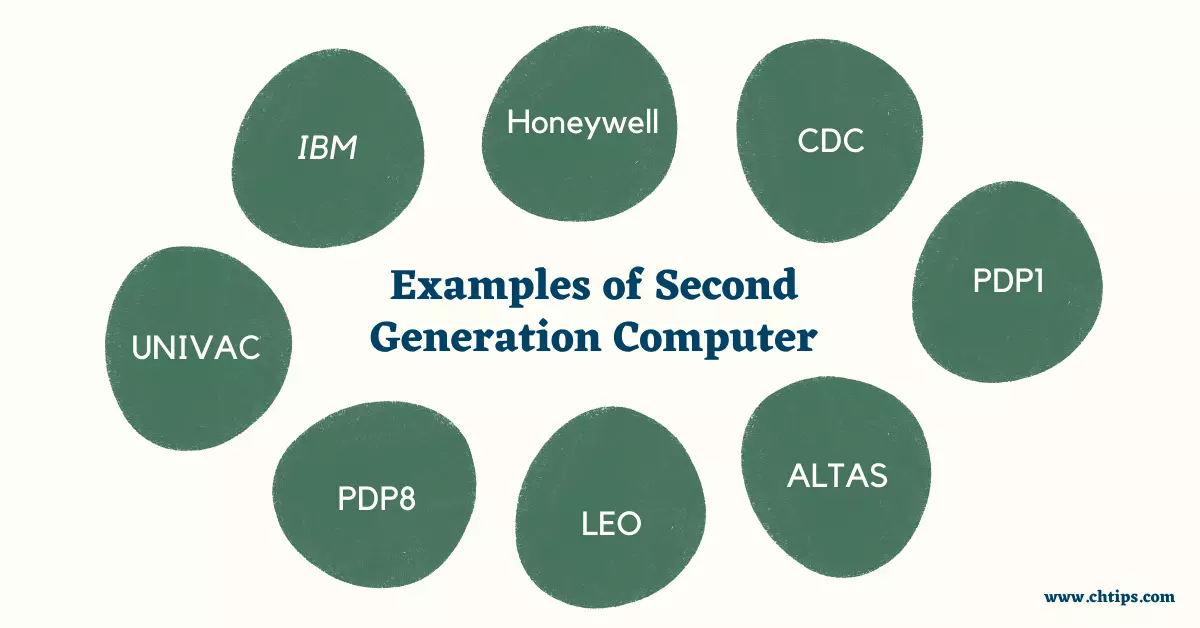
Examples of Third (3nd) Generation of Computer
- IBM-360 Series
- Honeywell – 6000 series
- PDP (Personal Data Processor)
- IBM-370/168
- TDC-316
- UNIVAC 1108
- ICE
- PDP-8
- PDP-5
- PDP-1
- Barose-5700/6700/7700
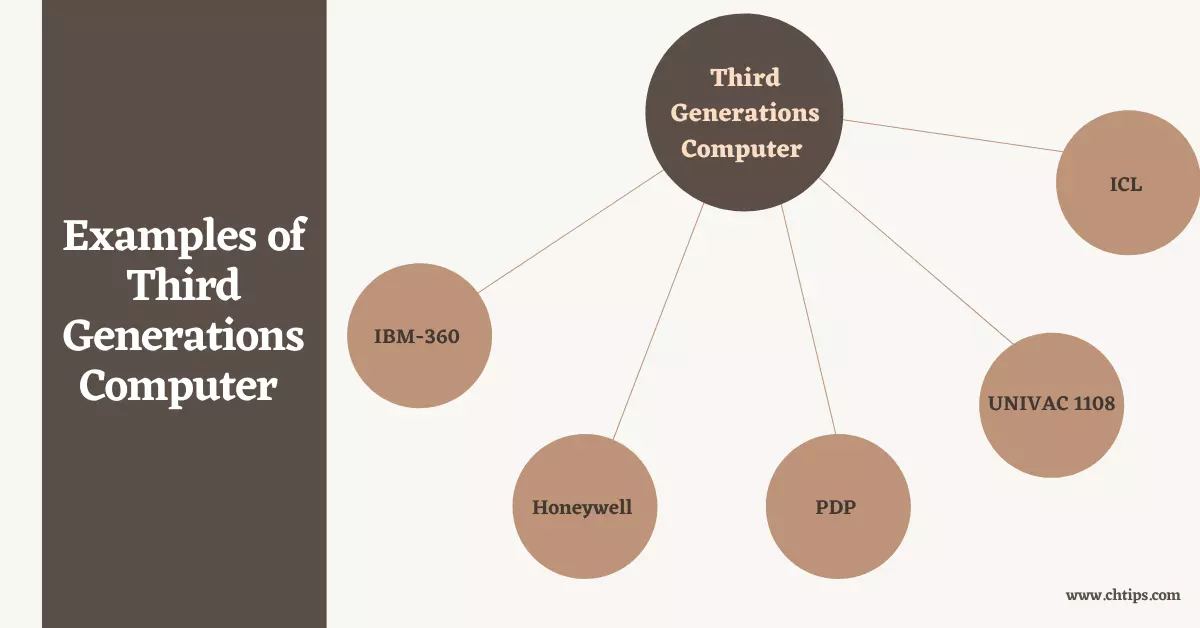
Five Generations of Computers
- First Generation of Computer (1940-1956).
- Second Generation of Computers(1956-1963).
- Third Generation of Computers(1964-1971).
- Fourth Generations of Computers( 1971-To 2000).
- Fifth Generations of Computers(Present and Beyond).
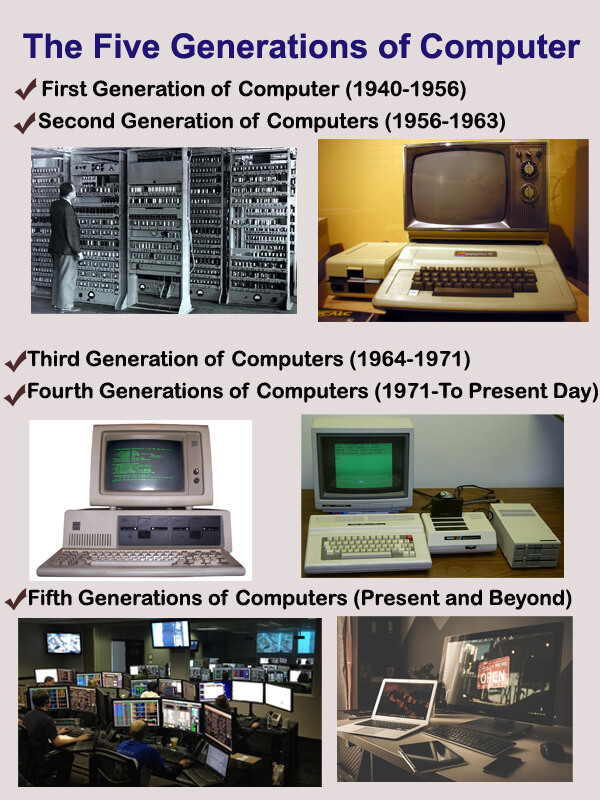
All Generations of Computer Systems [1st to 5th]
| # | Computer Generations | Timeline | Hardware |
| 1 | First Generation of Computer | 1940-1956 | Vacuum Tubes |
| 2 | Second Generation of Computer | 1956-1963 | Transistor |
| 3 | Third Generation of Computer | 1964-1971 | Integrated Circuit (I.C.) |
| 4 | Fourth Generation of Computer | 1971-1980 | Microprocessor |
| 5 | Fifth Generation of Computer | 1980- Till Now | Artificial Intelligence |
Difference Between 2nd & 3rd Generation of Computer
Related Articles
- Advantages and Disadvantages of Computer
- Advantages and Disadvantages of Fifth Generations of Computer
- Advantages and Disadvantages of First Generation Computer
- Characteristics and Features of Third Generation Computer
- What is Versatility In Computer System
- Essential Attributes of Good Software
- Smallest Unit of Computer Memory Storage
- How Do Computers Works at the Most Basic Level
- 12+ Characteristics of Fourth Generations of Computer
- Advantages and Disadvantages of Fifth Generations of Computer
- What are the Five Generations of Computer System?
- Explanation on a Brief History of Computers
- 10 Characteristics and Features of Second Generation Computer
- What are the Five Generations of Computer System?
- Advantages and Disadvantages of Second Generations of Computer
- Fourth Generation of Computers With Characteristics, Advantages, Examples and Uses
- 11 Advantages and Disadvantages of Third Generation of Computers
- Differences Between First and Second Generation of Computers
- Advantages and Disadvantages of Fourth Generations of Computer
- Differences Between Third and fourth Generation of Computers
- Advantages and Disadvantages of Supercomputers
- Computer Basic Tutorials
Frequently Asked Questions [FAQs]
Which language Did Second (2nd) Generation of Computer Used?
Assembly or assembler languages were used in 2nd generation of computer
Which language Did Third Generation of Computer Used?
BASIC, COBOL, Pascal, Fortran, C, C++, Perl and Ada.
Second (2nd) Generation of Computer Year?
1959-1965
Third (3rd) Generation of Computer Year ?
1964 to 1971,
Third Generation of Computer was Based on Which Technology
Integrated Circuit [IC]
Second Generation of Computer was Based on Which Technology
Transistors
Get In Touch
I have also written and compiled some articles on computers and telecommunications, and please go through them.
I hope you will like reading it.
I hope that all the questions and queries related to Differences Between Second Generation and Third Generation Computer System have been answered here.
If you have any questions related to the Pros and Cons of 2nd and 3rd Generation of computer.
Don’t hesitate to contact me, and if you need to add, remove, or update anything from the article, please let me know in the comment section or via email.
I will be more than happy to update the article. I am always ready to correct myself.
I was hoping you could share this article with your friends and colleagues; this motivates me to write more on related topics.
!!! Thank You !!!